Facing domestic vulnerabilities and external shocks, Latin American banks adapt to a changing environment
Latin American banks continued to face important challenges in 2016, including slim GDP growth, weakened consumer confidence and depressed commodity prices. The outlook for 2017 is not looking much better due to a mix of domestic vulnerabilities and external shocks. No strangers to boom and bust cycles, Latin American banks are adapting to the changing environment.
Among factors causing concern from Washington are the Trump administration’s aim to renegotiate free trade agreements, a strengthening dollar and the likelihood of further US interest rate hikes that could spark capital outflows from emerging markets, including Latin America. Exacerbating the uncertain outlook is a corruption scandal that began in Brazil, with allegations that the Odebrecht construction company paid $800 million in bribes to secure government contracts, and has since spread throughout the region, where many governments are now implicated.
Santander, the Spanish bank with operations throughout the region and this year’s overall winner in Latin America, believes that technology investments have been among the keys to its success in the region, which contributed €3.4 billion ($3.6 billion) in attributable profit to the Santander Group in 2016, for a 6.1% year-over-year increase (an 18.6% increase discounting currency adjustments). Brazil alone contributed 21% of the group’s profits. In Brazil, “loyal customers increased by 500,000 with digital advances (including the launch of biometrics) and product innovations helping improve the customer proposition,” Santander states in its 2016 annual report. “The change in business mix carried out in recent years helped control provisions and credit quality.”
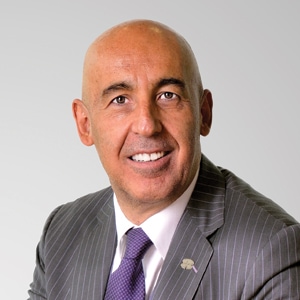
Banks have responded by managing credit risk and increasing loan-loss provisions, as well as rethinking their business strategies to attract new customers. Maintaining conservative policies has also paid off. BBVA Provincial in Venezuela, a country facing an economic meltdown and mounting political turmoil, still managed to report a 184% increase in total assets in 2016, of which 52% involve productive assets. The bank’s liquidity rose 320% year over year, mainly from the increase in non-mandatory reserves of 775%. BBVA Provincial’s strategy has been focused on customer and profitability growth.
In Argentina, Banco Macro, the country’s third-largest bank, maintained its long profitability streak despite a weak economy. The bank’s shares gained nearly 30% last year, as investors were encouraged by Macro’s historically conservative practices that have given it a good credit position, as well as the capital and liquidity it needs to take advantage of Argentina’s gradually recovering economy. Similar conservative policies continued to help Banco Popular de Puerto Rico remain profitable, even as the US commonwealth tackled a decade-long recession.
With the Ecuadorean economy growing by a meager 0.4% in 2015 and 0.7% in 2016 due to weak energy prices that have hurt the oil producer, Produbanco focused on four pillars to minimize the impact on its business: strengthening its responsible risk management; expanding its market share in the areas of personal banking, credit and debit cards, small and midsize enterprises (SMEs) and the commercial middle market; consolidating its market dominance in corporate banking; and investing in multichannel banking initiatives.
While the economic situation was better in Mexico, where GDP grew 2.3% in 2016, Banorte launched its 20/20 strategy, which aims to double its profits and achieve an ROE of 20% by 2020, mainly through increased cross-selling. “The main goal is to turn Banorte into the best financial group for Mexico and for Mexicans,” says Marcos Ramirez, CEO of Grupo Financiero Banorte. “Therefore, the plan is based on three pillars: our investors, for whom we seek to generate added value and profitability; our customers, whom we aim to serve more closely; and our partners, for whom we strive to offer the best conditions to develop.”
Managing credit risk has meant that some banks have had to rebalance their loan portfolios in different ways. BBVA Paraguay is a case in point. Despite Paraguay’s higher than expected GDP growth in 2016, bank credit remained virtually flat, with just a 0.4% increase. While the bank had historically focused on business loans, it has now launched a new strategic plan to target more individual customers. Of BBVA Paraguay’s total credits, 15.6% now correspond to individuals, giving it a market share of 8.4% (up 63 basis points over the past year).
In Honduras, Banco Ficohsa also launched a strategy to diversify its balance sheet and service portfolio, which is benefiting from its acquisition of Citi
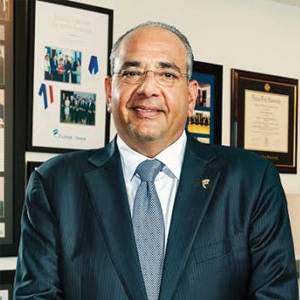
Honduras’ retail banking operation. The move has helped Ficohsa balance its lending portfolio by increasing consumer loans and reducing its historical focus on corporate borrowers. Scotiabank Barbados successfully tackled a slightly different challenge, as local customers began shifting their business away from commercial banks to credit unions, which registered a 7.12% gain in loans last year. The strategy unleashed a vigorous competition among banks to retain high-return clients. Scotiabank Barbados has maintained its local market dominance, with its credit card market share alone jumping to 50%.
SMEs have become prime targets as new customers for banks throughout the region to further diversify risk. In a banking survey conducted by the IDB and the Latin American Banking Federation (Felaban) last year, 96% of banks said SMEs are a strategic part of their business, up from 66% in 2008. Another 87% said they have special divisions focused on SME loans and services, up from 75% the year before.
However, the survey also notes that servicing the SME market poses some important challenges as well. “Banks find themselves in a ‘vicious circle’ that is difficult to overcome: The informality of SMEs makes it difficult to determine their ability to pay, and there is a lack of guarantees for compliance with internal and regulatory requirements,” the study notes, adding that for banks to obtain the necessary information involves additional costs. Other concerns include the short lifespan of many such businesses and the lack of specialized training for bank staff to address their unique needs. However, the study indicates that such limitations are declining and, with Felaban data showing SMEs account for 64% of jobs and 40% of GDP in the region, banks are up for the challenge.
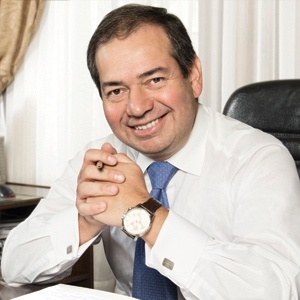
Initiatives are varied. Scotiabank, this year’s winner in the Turks and Caicos Islands, offers specialized workshops for SMEs on everything from drafting business plans to evaluating tools for cash flow management. Ficohsa in Honduras has operated a specialized banking center for SMEs since 2015, offering products and services tailored to these businesses, including loans, foreign currency transactions and point of sale services, among others. Our winner in Chile, Banco de Chile, was recognized by the government last year for its active role in helping secure loans for SMEs with government guarantees.
Millennials also present an interesting market segment for banks throughout the region. According to World Bank data, there are 154 million people between the ages of 15 and 29 in Latin America and the Caribbean, many of whom are unbanked or underbanked. To attract them, however, banks have also had to adapt to the different ways in which younger customers communicate.
“The new generations want the best service, without limitations of geography and time,” says Camilo Atala, CEO of Grupo Financiero Ficohsa. In 2016, the Honduran bank launched its electronic banking platform, followed this year by the introduction of its first app. “We are the only bank in Honduras to offer social media banking, a ‘personal banking assistant’ tool that provides personal banking information through direct messages on Facebook and Twitter.”
Banco de Credito del Peru launched a digital transformation strategy that includes the use of artificial intelligence and cognitive technology. Our country winner in Peru, it is the first bank there to use a chatbot to handle customer contacts through Facebook Messenger. Banco Agromercantil in Guatemala launched BAMillennials, a division that issues the country’s first personalized debit cards and allows customers to gain access to unique experiences, including concerts and events, as well as to such value-added benefits as insurance services.
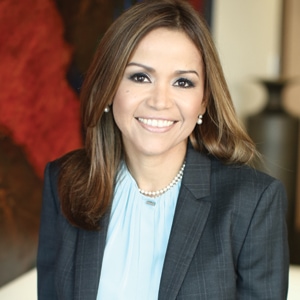
At the heart of these changes are banks’ increased investments in technology to better serve customers in the way they now expect to be serviced. “The consumer has changed,” says Aimee Senmat de Grimaldo, CEO of Banistmo in Panama. “Clients expect simpler and immediate interactions, real-time access to information to compare and contrast with their friends and family before making a decision, and they also expect solutions where and when they need them.” Senmat de Grimaldo believes that only those banks capable of evolving their processes and technology to meet this new reality will survive. Banistmo is currently overhauling its entire operational architecture to do just that.
Other technology initiatives are underway throughout Latin American and Caribbean banking markets, and they are producing results beyond profitability. The National Commercial Bank of Jamaica, which launched its “Digitization Agenda” in 2015, is now working with universities to help train students in disciplines that will ultimately generate innovation to redefine banking systems and processes while contributing to the creation of higher-paying jobs on the island. In 2016, Banco Agricola in El Salvador, as part of a strategy to modernize its technological infrastructure, inaugurated a new $55 million operations center that has become a model for other banks.
The uncertain business climate has led many Latin Americans to take their money overseas, not only to tax havens and destinations known for bank secrecy laws, but also to banks in Miami and New York. Banks in Latin America, therefore, are working to address this important market segment’s concerns, hoping to keep some of those deposits and investments at home.
In early 2016, Banco de Bogotá in Colombia created a new premium banking operation to reinforce its offerings to its preferred segment. The new division has offices in the country’s major cities, serving more than 13,000 clients on issues regarding investments and risk management. Also in 2016, Scotiabank Bahamas continued its rollout of Scotia Wealth Management, its new brand for high net worth clients, which it initially launched in 2015. The bank now offers investment advisory, private banking, trusts and other wealth solutions for customers in the Bahamas.
As countries in Latin America and the Caribbean work to overcome their economic doldrums, the region’s banks will play a key role in helping spark the recovery. Banks are targeting productive sectors to provide financing and know-how that can help them rebound and grow, thereby contributing to economic development. Banco do Brasil, for example, has consolidated its position as the principal financial partner for Brazil’s agribusiness sector, a major source of jobs and export revenues. The bank now holds a 62% market share of the rural banking segment, while reporting a nearly 10% rise in agricultural and agroindustrial loans in first-half 2016 over the same period a year earlier. For the 2015-2016 crop season, Banco do Brasil accounted for 57.9% of working capital, 37.9% of investment and 42.4% of crop trading for the sector.
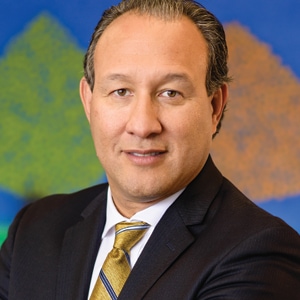
In Nicaragua, a country where agriculture dominates much of the economic output, Banco Lafise Bancentro in 2016 marked its 19th anniversary as the only bank to sponsor the National Agricultural Fair, the largest annual gathering of the agricultural sector’s key players, both large and small. The bank offers a variety of specialized services and products for this niche market segment and reportedly made more than $2 million in loans available to fair participants last year alone.
In the Dominican Republic, the Caribbean’s largest tourism destination, Banco Popular Dominicano accounted for nearly 50% of credits granted to the tourism sector last year, including support for growing non-traditional market segments, such as health and wellness travel. On a more micro level, Banco Mercantil Santa Cruz in Bolivia has been helping stimulate economic growth by increasing its social housing loans, making it easier for Bolivians to become homeowners. The Bolivian bank is also increasing credit lines to productive sectors to fuel business sector expansion.
Meanwhile, banks have maintained their corporate social responsibility initiatives, which often contribute to improving the lives of those in the communities in which they operate, but also grant the banks a considerable amount of goodwill and brand recognition, particularly in difficult times during which some government programs may be facing budget cuts. Banks are taking different approaches to CSR, depending on their priorities and areas of interest. However, education and the environment seem to be two of the areas receiving considerable

attention and investments.
On the environmental side, Banistmo in Panama inaugurated its new $40 million corporate headquarters in Panama City last year, with its state-of-the-art building receiving a LEED Platinum certification. The bank is an important contributor to environmental protection efforts throughout the isthmus, for which it received an Environmental Excellence Award from the nation’s Environmental ministry in 2016. Some 30% of Banistmo employees have volunteered for environmental, educational and cultural activities.
In neighboring Costa Rica, one of the world’s premier ecotourism destinations, Scotiabank Costa Rica concluded another year of its successful program to recover and restore the main public park in the capital city of San Jose, in a bid to convert it into an urban forest by planting thousands of new trees. Both Costa Rica and Panama are recognized for their large territorial extensions of natural preserves which, in the case of Panama, is crucial for the proper operation of the Panama Canal through consistent rainfall levels.
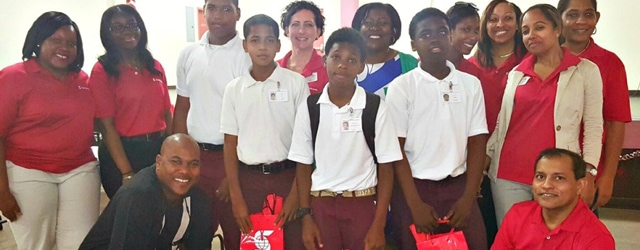
In education, several banks maintain large foundations that support school programs and scholarships, particularly for youth. Belize Bank, the largest bank in the small Central American country, has continued to focus on scholarships, sports and youth development initiatives. In Trinidad and Tobago, Republic Bank’s Youth Link Apprenticeship Program has been committed to youth development since 1986, helping young people develop valuable business skills. Likewise, in the US Virgin Islands, the Scotiabank USVI subsidiary made a $2 million donation to Junior Achievement’s “Road to Success” program, helping the NGO offer financial literacy and social development programs to young people in the islands, where it also supports a scholarship fund for students attending the University of the Virgin Islands.
Other banks, however, prefer to cast a much broader net to participate in a wide variety of CSR activities. As an example, Santander Uruguay supports everything from rural education initiatives and nationwide blood donation drives, to youth orchestras and hydroponics development. Santander Uruguay has become one of the country’s leading CSR contributors due to this wide range of actions.
Analysts say banks will need to brace for another difficult year in 2017. The IMF has lowered its regional GDP forecast to 1.2% this year and a paltry 0.2% in 2018. “In Latin America, the growth downgrade reflects to an important extent more muted expectations of short-term recovery in Argentina and Brazil, following weaker-than-expected growth out-turns in the second half of 2016, tighter financial conditions and increased headwinds from US-related uncertainty in Mexico and continued deterioration in Venezuela,” says the IMF forecast.
It seems banks in the region will have to continue to seek creative ways to remain resilient.
|
Best Banks In Latin America 2017 |
|
|
REGIONAL WINNER |
Santander |
|
Argentina |
Banco Macro |
|
Bahamas |
Scotiabank Bahamas |
|
Barbados |
Scotiabank Barbados |
|
Belize |
Belize Bank |
|
Bolivia |
Banco Mercantil Santa Cruz |
|
Brazil |
Banco do Brazil |
|
Chile |
Banco de Chile |
|
Colombia |
Banco de Bogota |
|
Costa Rica |
Scotiabank Costa Rica |
|
Dominican Republic |
Banco Popular Dominicano |
|
Ecuador |
Produbanco |
|
El Salvador |
Banco Agricola |
|
Guatemala |
Banco Agromercantil |
|
Honduras |
Banco Ficohsa |
|
Jamaica |
National Commercial Bank of Jamaica |
|
Mexico |
Banorte |
|
Nicaragua |
Banco Lafise Bancentro |
|
Panama |
Banistmo |
|
Paraguay |
BBVA Paraguay |
|
Peru |
Banco de Credito del Peru |
|
Puerto Rico |
Banco Popular de Puerto Rico |
|
Trinidad & Tobago |
Republic Bank |
|
Turks & Caicos |
Scotiabank Turks & Caicos |
|
Uruguay |
Banco Santander Uruguay |
|
US Virgin Islands |
Scotiabank US Virgin Islands |
|
Venezuela |
BBVA Provincial |



